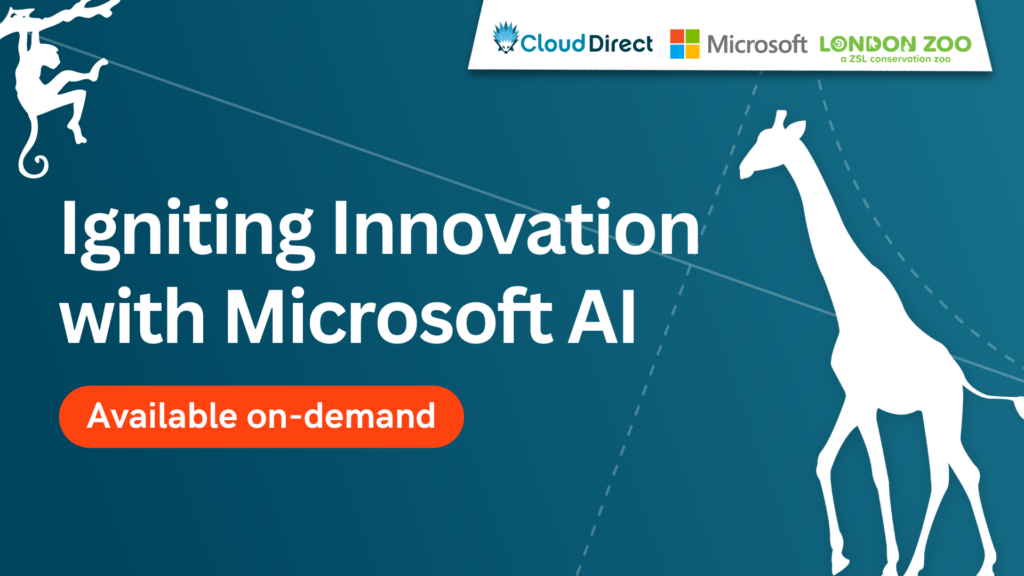
Microsoft made it clear at this year’s Build conference that Azure development is one of their key focus areas. Scott Guthrie, the Executive Vice President of the Microsoft Cloud and Enterprise group said:
“One of the defining aspects of cloud computing is the ability to innovate and release new technology faster and at greater scale than ever before.”
With the kind of rapid evolution we’ve grown to expect from the cloud, Azure is likely to look quite a bit different in five years. With that in mind, we’ve gathered our top predictions for what Azure will look like in 2025.
Information overload
By 2025, IDC predicts that the total amount of data created will reach 163 zettabytes. That’s a massive number and will drive even more organisations to adopt some form of cloud computing just to store the droves of information they need to operate.
Azure is already well-prepared for this huge increase in raw data – it’s got more global data regions than any other provider to date. It’s likely that we’ll see even more upscaling in this area, though.
Microsoft is preparing for the spread of smart homes, smart offices and smart cities, which it predicts will produce a combined 250 petabytes of data per day. Expect the Internet of Things (IoT) to give way to the ‘Internet of Everything’. AI will connect people with their devices, their offices and their cities.
Dealing with the data
“It is a capital mistake to theorize before one has data.”
So says Sherlock Holmes, and you can bet that Azure developers are thinking the same thing. The massive uptick in data means nothing if it can’t be used and analysed, and humans just can’t work with that much data efficiently. They need help if they want to use their data to drive innovations and development at all.
AI will undoubtedly play an increasing role for Azure users, allowing for rapid analysis of swathes of information. Previously under-utilised data will become one of the most valuable assets for many organisations – once the knowledge it offers is unlocked by machine learning and artificial intelligence.
Azure’s Cognitive Services will be employed to analyse, report and predict on a far larger scale, and will likely come built-in to almost every new app. On-site hardware for most organisations just won’t have the ability to perform these tasks, so the cloud will be employed. Effective analysis enabled by AI will no longer become a bonus; it’ll be the main event.
The rise of new media
The democratisation of VR and AR will give way to an exponential increase in use-cases for the technology. Azure’s Media Services takes the processing, streaming and encoding burden off of individual developers and organisations, opening up the possibilities for ever more ambitious experiences and functions. Expect to see Azure at the forefront for the use of new media by 2025.
Hybrid cloud futures
IDG’s 2018 Cloud Computing Survey offers a number of insights that point to the future of cloud computing. Amongst their discoveries was that a multi-cloud strategy is an increasingly popular method of adoption for enterprises. Both public and private cloud use has increased since last year, and integration between the two will be even more important for a broader range of organisations in the next few years.
Azure offers all flexibility that multi-cloud and hybrid cloud strategies you could need. With its Stack and SQL offerings already enjoying success, it’s likely that business use will have grown significantly by 2025. Azure’s secure cloud offerings is one of the key factors behind its rapid increase in market share – another insight offered by IDG’s survey.
Cloud Direct’s Azure predictions
Scott Guthrie is aware of what people will come to expect from the cloud in the coming years:
‘The technology…is really being bet on to deliver radically new digital experiences that completely transform your organisation’s business model.”
These new digital experiences will be the result of a change in the way that people will use Azure by 2025. The percentage of organisations using the cloud just to store and retrieve data will – and has already begun to – drop, while the percentage that expects data analysis, hybrid integration and new media support will rise.
The way we work is changing alongside the cloud as its capabilities are broadened and integration is wider spread. Data analysis will no doubt play a bigger role in most industries with the ability to gain near-instant insight from swathes of information, and there’s no telling what the rise of new media will bring with it. Meetings in VR? Augmented reality architecture planning? Whatever the application, there’s no doubt that entire industries will experience a paradigm shift. Azure will be both driving and responding to this shifting understanding and use of the cloud.







